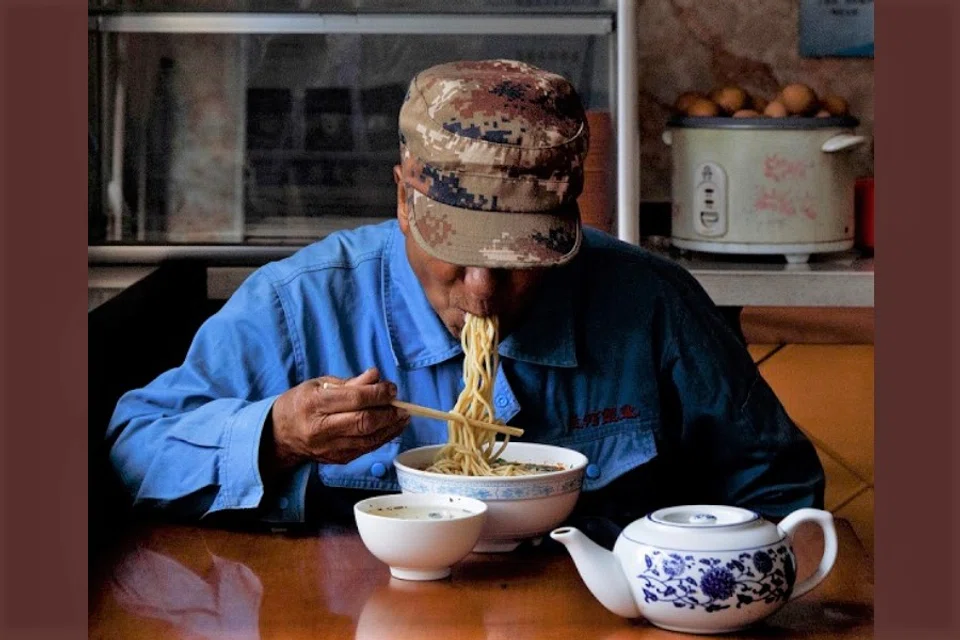The power of food memories in shaping who we are
Food memories form part of our intangible cultural heritage. To lose them is to lose part of our culture, says cultural historian Cheng Pei-kai. The ancients certainly knew a thing or two when they laid down the golden rules of healthy eating. But they're not the only bastions of wisdom. Every region, every village with its own terroir, has a unique food culture to pass down for generations to come - if only we'd let them.

We, humans and other animals too, eat to live. No wonder the ancient Chinese have a saying: "Food and sex are man's basic desires." This saying is recorded in the ninth chapter (《礼运》) of the Book of Rites (《礼记》), and is said to have been uttered by Confucius. They are the wise words of a sage indeed. While the sentence is short, it is the simplest and wisest conclusion that ancient sages have come up with, after observing how people survive and reproduce. It talks about man's basic needs for survival and the foundations upon which civilisations are based.
Food, in fact, has become civilised through the course of history and with the passage of time. Counting from the age of the Peking Man (北京猿人), it has been at least 400,000 to 500,000 years since we first discovered fire for cooking and in the Neolithic period, making pottery for kitchenware. Fishing and hunting, and later planting and rearing followed, before skilled chefs armed with sophisticated cooking vessels came on the scene.
How food culture is formed
A civilisation is unique in the way that it creates rules and procedures in everyday life which are elevated by sensory experience to a spiritual level and eventually morph into tradition. It is the same with the civilisation of food: everything - from obtaining raw materials, preparing the ingredients, cooking and calibrating the flavours, to arranging the tableware and tasting the dishes - is an accumulation and improvement of generations of practical living.

The Xiang Dang (乡党) chapter of The Analects describes in detail the systematic dietary rules that Confucius observed during a sacrificial ceremony. In layman terms, they read: "Choose only the finest ingredients and cook with the greatest care. Do not eat food that has become rotten or discoloured. Do not eat food that has not been properly cooked. Do not eat food that is not in season. Do not eat food that is poorly cut or sliced. Do not eat food that is not properly seasoned. While meat is delicious, do not eat too much of it to the point of indigestion. Drink wine to your heart's desire but do not get drunk and get involved in indecent acts. Do not eat food and drink wine casually bought on the streets. Ginger is good for the stomach and must not be thrown away. Do not be greedy, but eat in moderation." In retrospect, over 2,000 to 3,000 years have passed, but these words remain the golden rules of healthy eating and living.
After eating and drinking local fare, practical life experiences become a collective cultural memory and are even elevated into a metaphysical moral and ethical code.

The stringent set of rules that Confucius followed reflects the ritualistic thought process in ancient Chinese food culture. It also helps us to understand that the relationship that food has with etiquette and tradition is closely connected with religious piety and aesthetic considerations. The development of food customs around the world is related to such traditional cultural thinking. After eating and drinking local fare, practical life experiences become a collective cultural memory and are even elevated into a metaphysical moral and ethical code.
Jews and Muslims adhere to the food restrictions laid out in the Bible and the Quran respectively. For instance, it is against their religion for Muslims to eat pork and scaleless fish. These food restrictions are a culmination of the sensory experiences of their ancestors that later became a collective memory before being concretised into unbreakable religious rules and food customs of an ethnicity.
The different regions of China exhibit varied dietary habits that some have summarised as "south-sweet, north-salty, east-hot and west-sour" or "south-bland, north-salty, east-sweet and west-sour". Without going into whether such delineations make sense, they do indeed point to the fact that China is a country with a vast territory - the dietary habits of various regions are varied and have resulted in a wide array of cuisines. At the same time, different cultures and customs have also emerged, and are all worthy of our in-depth exploration.

Food as a precious intangible cultural heritage
In his book about the pursuit of traditional flavours (《寻访老味道》), Ji Quanbao describes Changzhou's (常州) food culture in detail. He talks about Jiangnan, the land of fish and rice (鱼米之乡), and also showcases the mouthwatering delicacies made with local produce. The book is glorious - focusing on traditional flavours, it documents the eating habits of the Changzhou people, introduces Jiangnan's traditional cuisine, and tells of the joys of the people preparing and eating this cuisine. In eight chapters, the book traces the historical and cultural traditions of local food beginning with the Changzhou pickled radish. It tells of every aspect of local food customs and how they came to be part of everyday conversations, familiar idioms, and popular delicacies.
Changzhou's longstanding food customs are an intangible cultural heritage that we need to urgently preserve and protect. Otherwise, it could possibly become endangered and annihilated by foreign barbarians like McDonald's and KFC.

What makes the book an even more interesting read is the sprinkling of many historical anecdotes about historical figures and their food: Emperor Wu of Liang and vegetarian ham; Zhu Yuanzhang (Emperor Hongwu of the Ming dynasty) and pickled radish; Su Dongpo (Su Shi) of the Song dynasty eating fish; Emperor Qianlong of the Qing dynasty eating chicken; Chinese historian Lv Simian eating the Changzhou sesame cake; and Chinese painter Liu Haisu eating the eight treasures rice pudding, just to name a few.
There is also a chapter dedicated to Changzhou's seasonal delights, arranged according to the four seasons from spring and summer to autumn and winter. Spring rolls, tangyuan, dragon-shaped noodles, qingtuan, three delicacies, rice dumplings, wonton, stuffed fried eggplants dumplings, yam paste mooncake, crab, lo mai chi, mutton soup, preserved vegetables, braised shallots, and Laba congee - these have all gradually become cultural memories that the young no longer remember. Through his detailed descriptions, Ji shows us that Changzhou's longstanding food customs are an intangible cultural heritage that we need to urgently preserve and protect. Otherwise, it could possibly become endangered and annihilated by foreign barbarians like McDonald's and KFC.
I hope that more people would be willing to discover traditional flavours and write books like this, showcasing rich and diverse regional cultures through the sensory pleasure of tasting food.
Related: Above Michelin: These professors would rather have Hakka pork belly with preserved mustard | Remembering a mother's beautiful smile and Suzhou's 'Sixth Moon yellow' crabs | How to drink tea like an ancient Chinese | Taiwan's nostalgic flavours, the glitterati and the kamikaze | Suzhou's way to the Emperor's heart | Art and history in a bowl of Suzhou noodles



![[Photos] Fact versus fiction: The portrayal of WWII anti-Japanese martyrs in Taiwan](https://cassette.sphdigital.com.sg/image/thinkchina/3494f8bd481870f7c65b881fd21a3fd733f573f23232376e39c532a2c7593cbc)

